#6th century BCE
Text
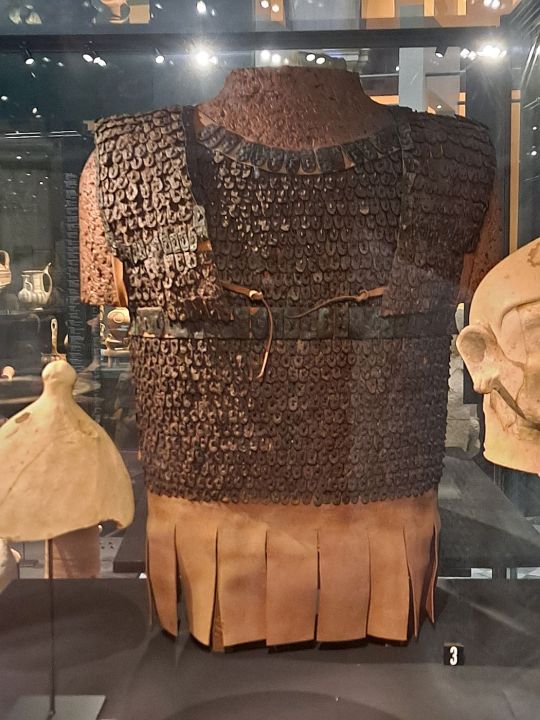
Splint armour
Idalion, Cyprus
6th century BCE
Iron and bronze
Medelhavsmuseet, Stockholm
Stockholm, November 2023
357 notes
·
View notes
Text

Terracotta vase in the form of a swan (6th century BCE, Greek, Corinthian).
Image and text information courtesy The Met.
46 notes
·
View notes
Text

“Adad-guppi was the mother of the last Neo-Babylonian king Nabonidus (556– 539 BCE) and most details about her are known from a pseudo-autobiographical text, which was most probably composed after her death. The text, written in the first person, informs us about the long life of Adad-guppi. The text emphasizes her special relationship to the moon good Sin, to whom Adad-guppi dedicated her life:
When in my dreams his hands were set (upon me), Sîn the king of gods spoke to me thus: “The return of the gods is because of you. I will place the dwelling in Harran in the hands of Nabonidus your son. He will construct Ehulhul and make perfect its work.”(Svärd 2019: 56 )
Earlier, the text recounted that the city of Harran was destroyed in 610, the destruction that made it necessary to reconstruct or at least to renovate the temple Ehulhul. It is not the king himself who receives the dream about his divine mission, but the dream is revealed to his mother who takes the role of a mediator between the god and her son. The reason for stressing the role of his mother might be that Nabonidus seemingly had no right to the throne through his paternal line, so he focused on his wise mother who had closer ties to his predecessor on the throne. Although Adad-guppi was not the daughter of one of the earlier kings, she claims to have had such a close relationship to the former kings that they elevated her to the status of a daughter. She repaid this treatment by taking care of the offerings for the kings after their deaths.
According to her autobiography, Adad-guppi played an important role as an advisor and supporter of her son, the king Nabonidus. There was not much reason for her son to exaggerate the role of his mother after her death, so her assertion is likely correct.”
Fink Sebastian, "Invisible Mesopotamian royal women?", in: The Routledge companion to women and monarchy in the ancient mediterranean world
#adad-guppi#queens#history#women in history#mesopotamia#6th century BCE#women's history#historyedit#quotes#historyblr#historicwomendaily#ancient world#antiquity
40 notes
·
View notes
Text
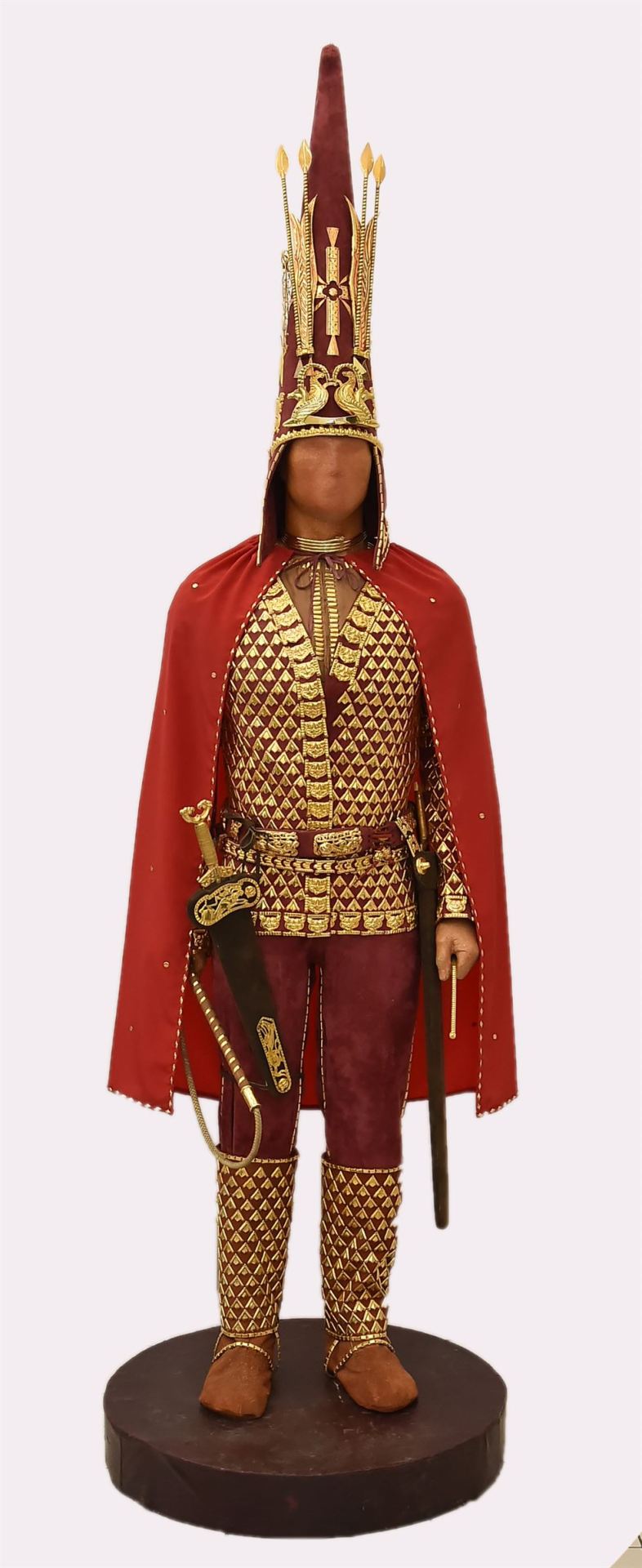
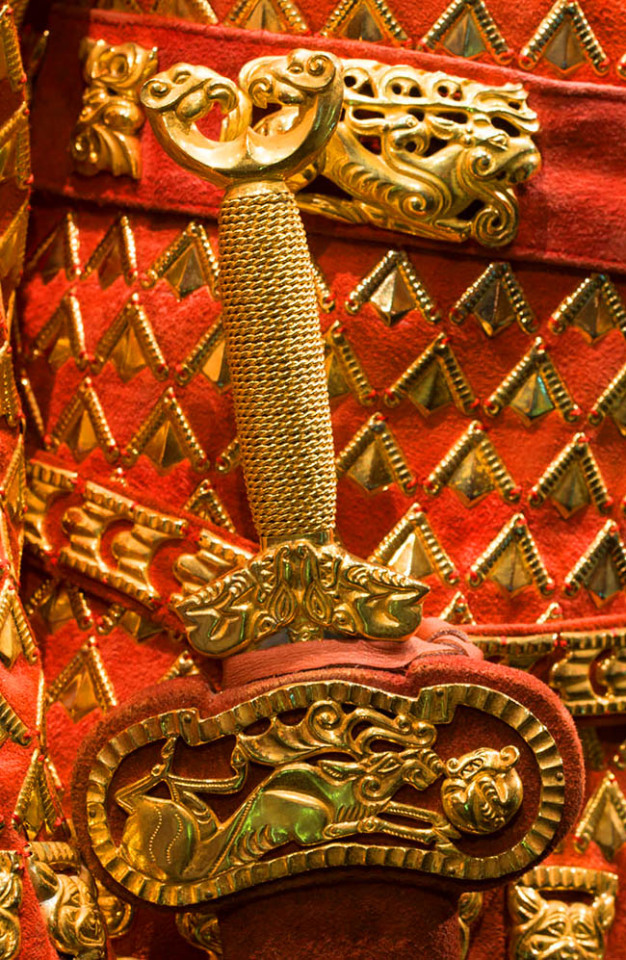
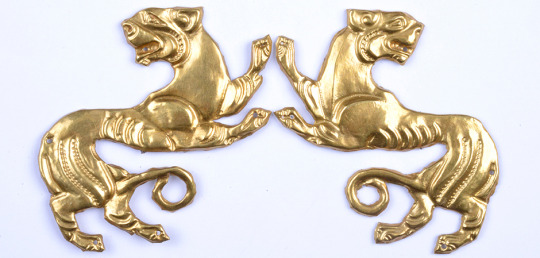
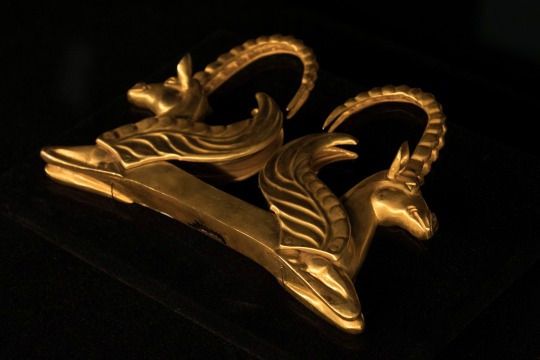
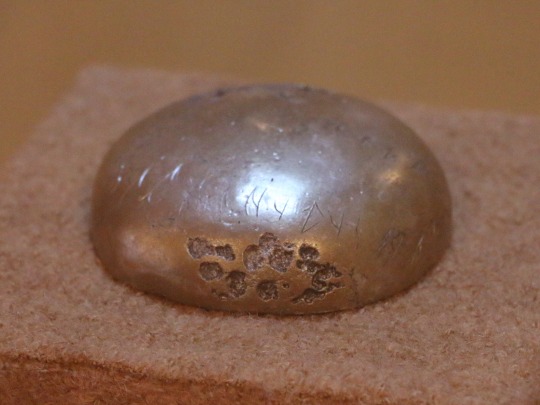



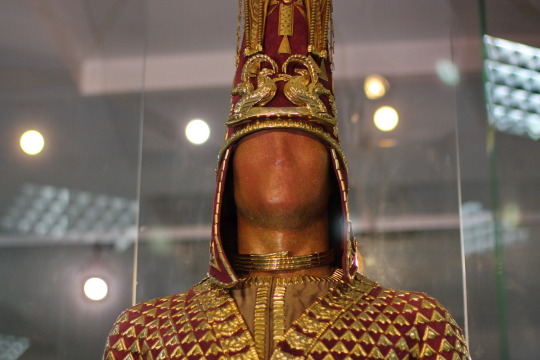
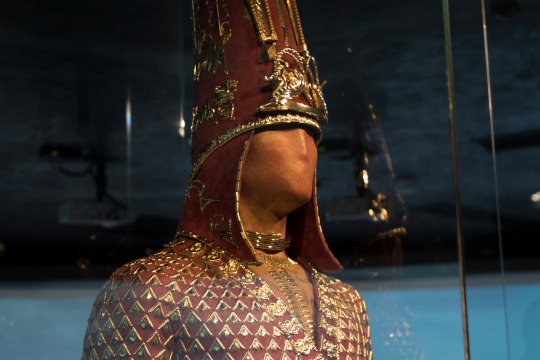


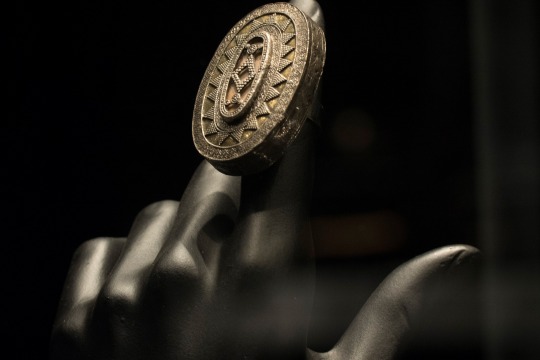

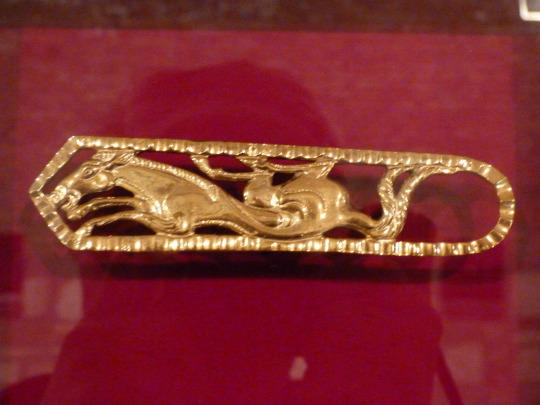
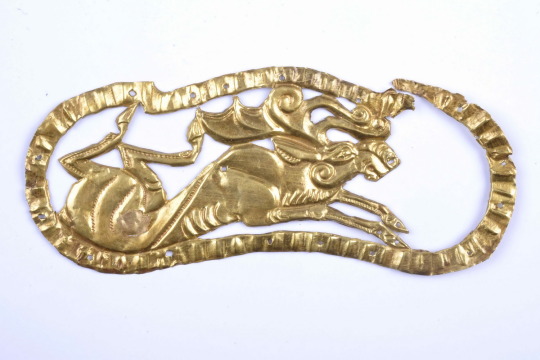
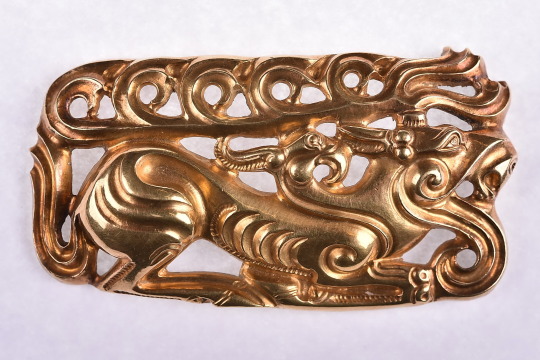
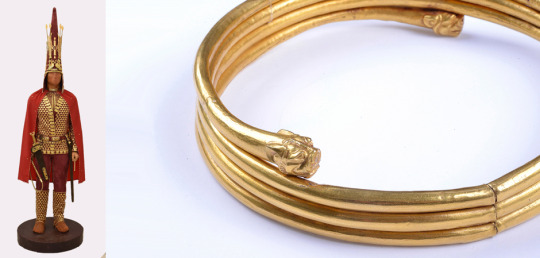
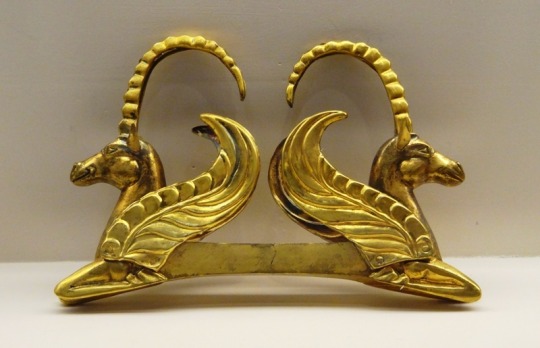
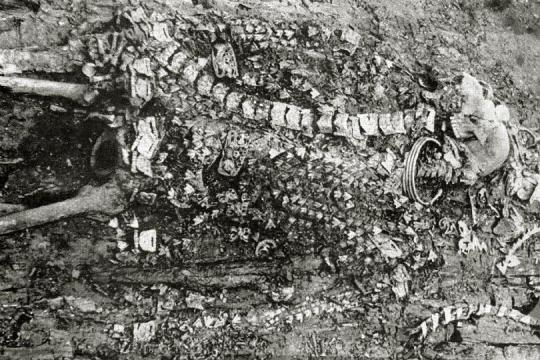


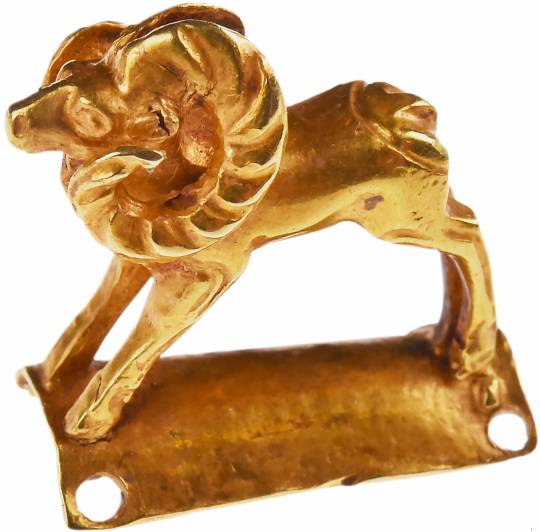
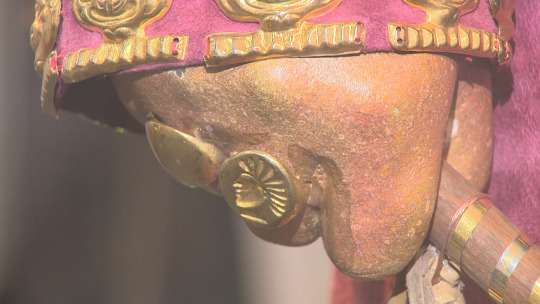
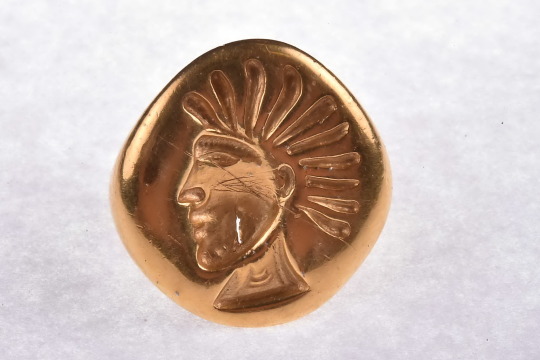
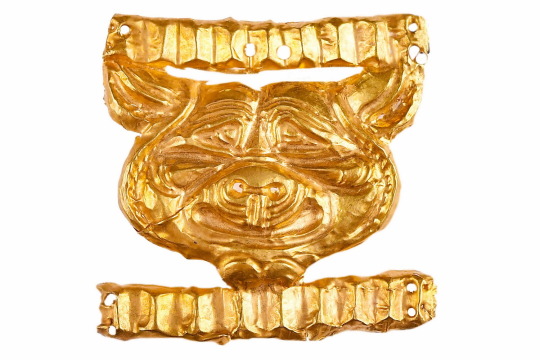

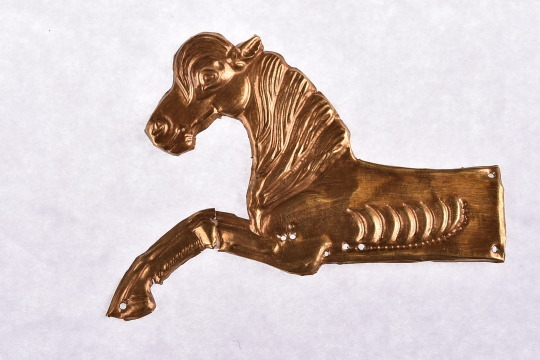

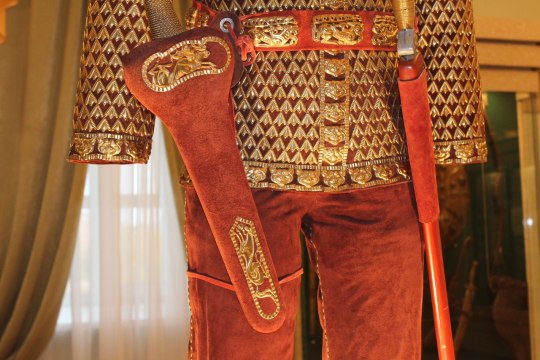
The Issyk kurgan of the 'Golden Man' 6th-3rd C. BCE
"The Issyk kurgan, in south-eastern Kazakhstan, less than 20 km east from the Talgar alluvial fan, near Issyk, is a burial mound discovered in 1969. It has a height of six meters and a circumference of sixty meters. It is dated to the 4th or 3rd century BC. A notable item is a silver cup bearing an inscription. The finds are on display in Nur-Sultan. It is associated with the Saka peoples.
The burial complex located on the left bank of the Issyk Mountain River, 50 kilometers to the East to the Almaty city. The unique archaeological complex found by a small group of Soviet scientists led by archaeologist Kemal Akishevich Akishev in 1969. The burial ground consists of 45 large Royal mounds with a diameter of 30 to 90 and a height of 4 to 15 meters. The Issyk barrow is located in the Western half of the burial ground. Its diameter is 60 meters and its height is 6 meters.
Situated in eastern Scythia just north of Sogdiana, the kurgan contained a skeleton, warrior's equipment, and assorted funerary goods, including 4,000 gold ornaments. Although the sex of the skeleton is uncertain, it may have been an 18-year-old Saka (Scythian) prince or princess.
The richness of the burial items led the skeleton to be dubbed the "golden man" or "golden princess", with the "golden man" subsequently being adopted as one of the symbols of modern Kazakhstan. A likeness crowns the Independence Monument on the central square of Almaty. Its depiction may also be found on the Presidential Standard of Nursultan Nazarbayev.
There were two burials in the grave complex: the Central one and the Southern one (to one side). Unfortunately the Central burial site had been robbed but the side grave was undisturbed. The burial chamber in the side grave was constructed from spruce logs. The tomb and its contents remained intact and buried. The skeletal remains were found in the Northern half of the chamber. More than 4,000 gold items were found in the chamber, as well as iron sword and dagger, a bronze mirror, vessels made of clay, metal and wood, shoes, headdresses, gold rings, statuettes, bronze and gold weapons, and an inscribed silver bowl dating from the 6th to 5th century BCE. Many clothing ornaments made of gold, a headdress and shoes were found on and under the remains. Next to the remains were an arrow with a gold tip, a whip (the handle of which was wrapped with a wide ribbon of gold in a spiral pattern) and a bag containing a bronze mirror and red paint. Scientific research, particular that of the anthropologist O. I. Ismagulov, shows that the remains belong to a member of the Saka peoples of Semirecheye, who have a European appearance with an admixture of Mongoloid features. The age of the body at death is estimated at 16–18 years, and its sex is indeterminate. The form of clothing and method of burial suggest that "The Golden Man" was a descendant of a prominent Saks tribe leader, or a member of the Royal family.
A text was found on a silver bowl in Issyk kurgan, dated approximately VI BC. The context of the burial gifts indicates that it may belong to Saka tribes.
The Issyk inscription is not yet certainly deciphered, and is probably in a Scythian dialect, constituting one of very few autochthonous epigraphic traces of that language. János Harmatta, using the Kharoṣṭhī script, identified the language as a Khotanese Saka dialect spoken by the Kushans.
The Wikipedia page has a possible (partial?) deciphering of the Issyk inscription as: "The vessel should hold wine of grapes, added cooked food, so much, to the mortal, then added cooked fresh butter on".
...
Kazakhstan will rebury an iconic ancient warrior in a time capsule this year (2019), in the hope that future generations will be able to establish who he really was, Kazakh TV reports.
Since independence in 1991, he has become a symbol of Kazakhstan's national heritage. His armour takes pride of place in the national museum in Astana, and tours the world as a calling card of Kazakh culture.
The bones were only rediscovered recently at a forensic institute, stored in a cardboard box with a scribbled note reading "The Golden Man, May He Rest in Peace".
"We know his age and social status, while DNA tests could provide us with exhaustive data," researcher Dosym Zikiriya told Kazakh TV.
But Yermek Zhasybayev of the Issyk Museum held out little hope of this. "The bones are in a bad state. They have been kept in a cardboard box for 50 years and been exposed to all sorts of bacteria and viruses, including modern ones. It is now impossible to get a full DNA transcription - if only we had the skull, or just one tooth," he told the TV channel.
Scientists say their only hope is to seal the remains in a special time capsule to prevent any further decomposition, so that technological advances might allow future generations to glean more information about the long-dead warrior.
In recognition of the Golden Man's status, the capsule will be "ceremonially buried in keeping with ancient royal traditions", Kazakh TV said.
Archaeologists are confident that the remains date back to at least the 2nd-3rd century BCE, when south-eastern Kazakhstan was home to the Saka people, who are believed to have been part of the broader Scythian nomadic confederation.
They were gradually displaced by the arrival of the Kipchak Turk ancestors of the Kazakhs, but modern Kazakhstan has taken the Golden Man to its heart."
-taken from wikipedia and bbc
#saka#scythian#scythian gold#archaeology#anthropology#history#ancient history#antiquities#antiquity#artifacts#museums#ancient jewelry#pagan#6th century bce#3rd century bce
220 notes
·
View notes
Photo
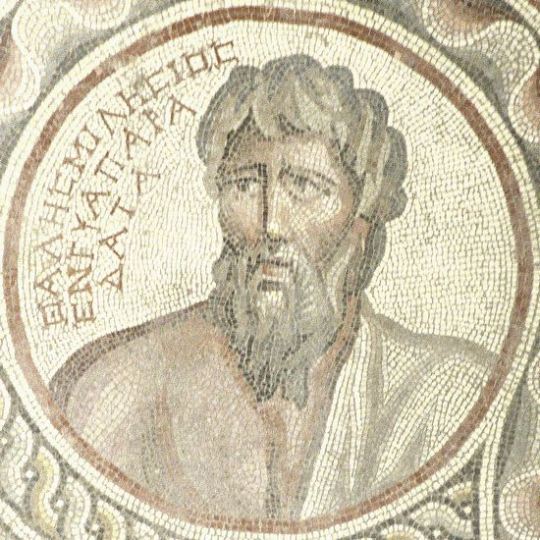

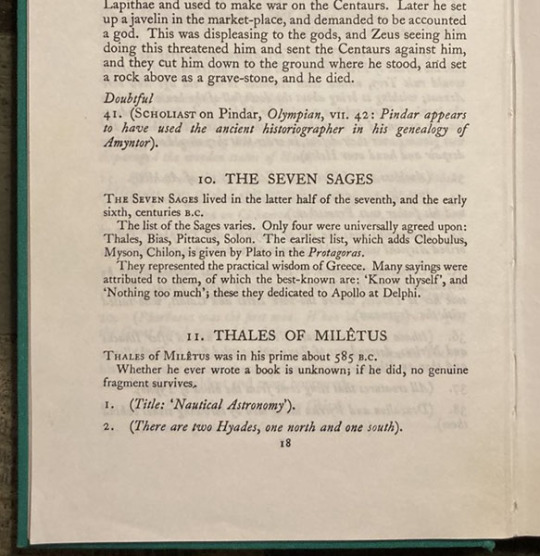

Thales of Miletus – Scientist of the Day
We are coming up on the eighth anniversary of the Scientist of the Day blog.
read more...
#Thales of Miletus#Pre-socratic#histsci#histSTM#6th century BCE#history of science#Ashworth#Scientist of the Day
40 notes
·
View notes
Text
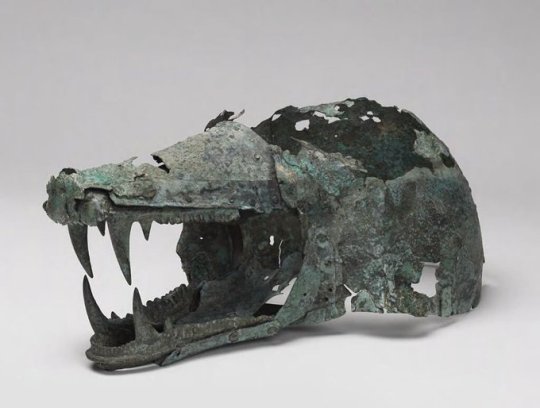
Etruscan Bronze Helmet in the Shape of a Wolf’s Head
6th-5th centuries BCE.
#Etruscan Bronze Helmet in the Shape of a Wolf’s Head#6th-5th centuries BCE#Wolf's Head Helmet#Head of a Boar#bronze#bronze helmet#bronze sculpture#ancient artifacts#archeology#archeolgst#history#history news#ancient history#ancient culture#ancient civilizations#etruscan history#etruscan art
4K notes
·
View notes
Text
honestly, the more i learn about ancient history and the origins of things that we take for granted, the more i realize that we actually know nothing about why the world is the way it is bc like 90% of the evidence has been ~lost to history~
#this comes from me reading mary beard's spqr and she's talking about the origin of the 12 month calendar#it's attributed to some legendary roman king from from like the 5th or 6th century bce#except there's questionable evidence that he actually existed#same thing with the whole concept of a ''census''#oh and like wide swaths of the structure of the catholic church bc a lot of it is based on the og roman state religion#fucking crazy man#history#text
7 notes
·
View notes
Text
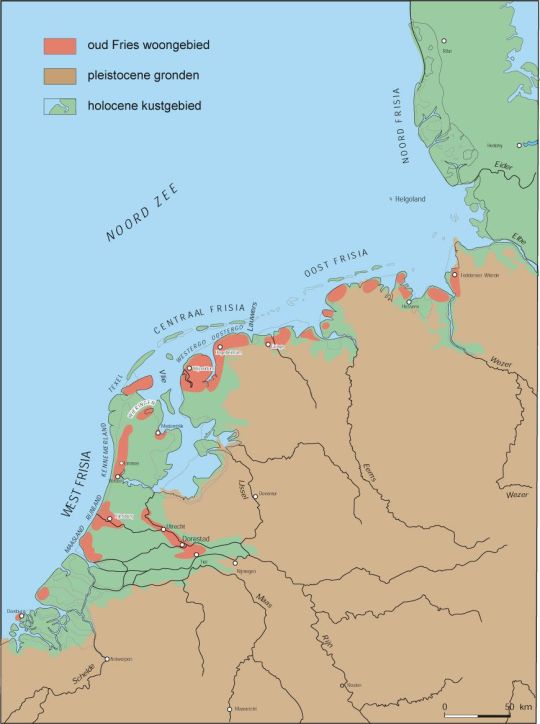
Frisia around the 6th century CE. Made by Fryske Akademy after Heidinga.



Landscape maps of the Netherlands in the Northern Iron Age show that Frisia was mainly a coastal landscape with wetlands (peatland, moor, bog, etc.) inland and only got wetter over time.
1) 500 BCE
2) 100 CE
3) 800 CE
Made by Rijksdienst voor Cultureel Erfgoed.
Brown means peat-wetland. Yellow spots at the shores indicate dunes or ridges, the most inhabitable land, as the orange spots in the illustration at the top of this post also indicate.
#frisia#northern iron age#map#netherlands#wadden#zeeland#zuid-holland#noord-holland#north sea#friesland#groningen#utrecht#gelderland#6th century#5th century BCE#1st century#8th century#island#germany#denmark
1 note
·
View note
Text
6th century bce archaic greece dashboard simulator

📜 oracles-onomakritos Follow
guys you have GOT to stop sticking in extra aristeias for your faves, the iliad is getting TOO LONG
⚔️ argivehero1184 Follow
nope lmao check out my guy diomedes he stabbed aphrodite!!!
📜 oracles-onomakritos Follow
look do you want anyone to even be able to perform this whole thing bc i know rhapsodes are impressive but their memories can only go so far
#parahomerica #i spend so much time on this and is anyone remotely grateful?
76 notes

🌠 thalesmilesios Follow
it’s going to be so crazy next month when it gets dark in the middle of the day, the medes are going to have no idea what hit them
🏛️ anaxagoraintheagora Follow
lol like that would ever happen! you’d have to piss off apollo even more than agamemnon did
🏛️ anaxagoraintheagora Follow
i stand corrected.
#ok headed down to didyma to make some offerings now #ngl this has me pretty freaked out
7,264 notes

🌸 iokolpos Follow
poem for atthis 💔
like a hyacinth on the mountains
the shepherds tread upon her underfoot
and on the ground a purple flower
Keep reading
💐 poikilothronanaktoria Follow
sappho dm me please i won't leave you like she did
247,383 notes

💩 iambicpharmakos Follow
wealth is such a dick, he never comes to my place to go hey hipponax here’s thirty minas of silver, and some extra too! what, is he scared?
11 notes

🏺 exekias-epoiese Follow

sneak peek of my new work! process video will be up soon, and remember I am currently open for commissions!
#ajax 😭😭😭#wanted to challenge myself with the hands and i think they turned out ok #the armor was much more fun though #art tag
693,554 notes

👹 assemblerofchoruses Follow
when you think about it... maybe helen's right when she blames herself for the trojan war? she chose to run away with paris and then so many people died because of it, she even says herself that she was a shameless dog
👹 assemblerofchoruses Follow
helen if your reading this i didmt meanit im so sorry
#i cant see anythignwhat is going on
187 notes

🍃 nikostratethepythagorean Follow
that hippokleides guy is such an icon. siege of tyre? hippokleides don't care! persian invasion? hippokleides don't care! fall of babylon? hippokleides don't care! peisistratus back in athens? hippokleides don't care!
#trying to bring this energy to the new olympiad #niko speaks
326 notes

🫒 notthatmegacles Follow
and don't just automatically vote for your tribe!
💐 poikilothronanaktoria Follow
um who even are any of these guys
🫒 notthatmegacles Follow
dude they're the patron heroes for the ten new tribes, have you been living under a rock????
💐 poikilothronanaktoria Follow
believe it or not i’m one of the dozens of people worldwide that live in a polis that’s not athens
#smh #lesbian problems
28,724 notes

4K notes
·
View notes
Text

An ancient Greek kylix showing a baby sitting in his pottychair and calling to his mother. ca. 480 BCE, the Royal Museums of Art and History, Brussels. And a 6th Century BCE potty found in the Athenian Agora. Agora Museum, Athens
More: https://thetravelbible.com/top-artifacts-from-ancient-greece/
2K notes
·
View notes
Text
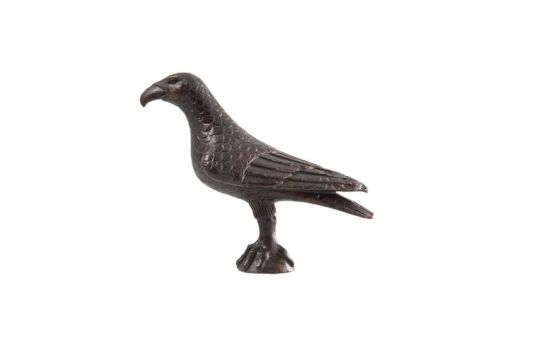

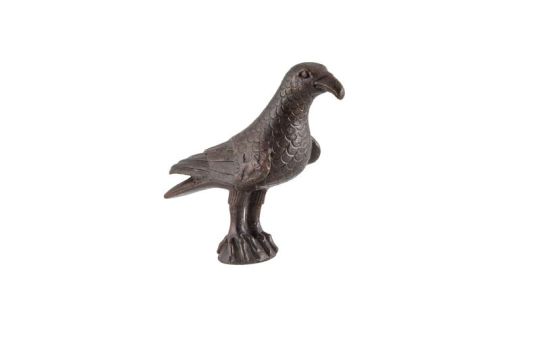

bronze crow figurine, archaic period (end of 6th century bce) - acropolis museum
783 notes
·
View notes
Text

Attic black-figure cup
* Athens
* 6th century BCE
* Medelhavsmuseet, Stockholm
Stockholm, November 2023
91 notes
·
View notes
Text


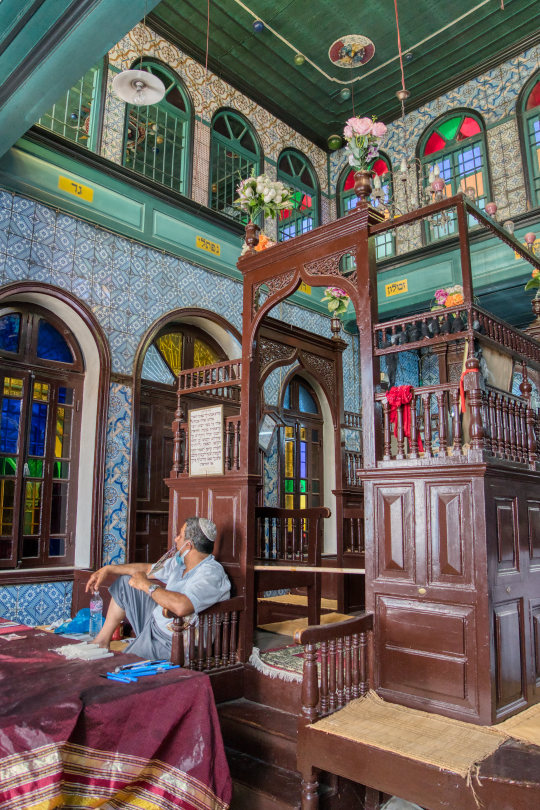
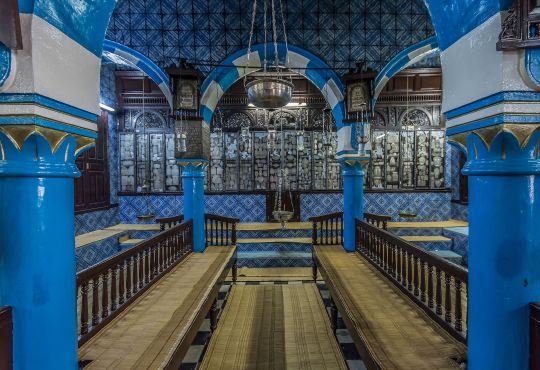
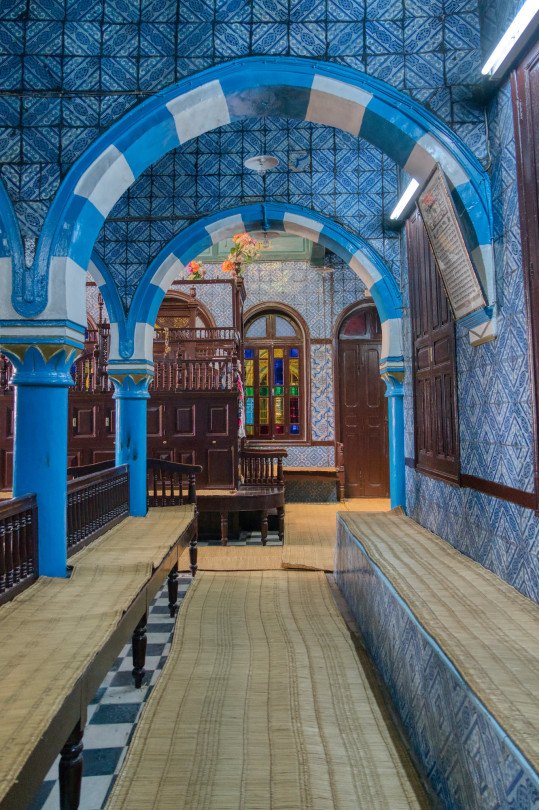
el ghirba synagogue in djerba, tunisia. when exactly it was founded is unknown, but it may date to the 6th century bce, making it the oldest functioning synagogue in africa (and possibly in the world). it's associated with toshavi jews, the maghrebi jewish community which predated the arrival of and was eventually absorbed by expelled sephardic jews.
#tunisia#architecture#interior#worship#jewish#sephardic#my posts#yes this is the synagogue there was a shooting in a few months ago#please dont yell at me for not mentioning it in the post
402 notes
·
View notes
Text

"greek influence in the 6th century bce" from Wikipedia. I just think it's fun how they mostly only went around the shorelines and didn't care for any inland areas. Like hii we're here to colonize your beach if that's okay 😊 yeah just the beach.
318 notes
·
View notes
Text




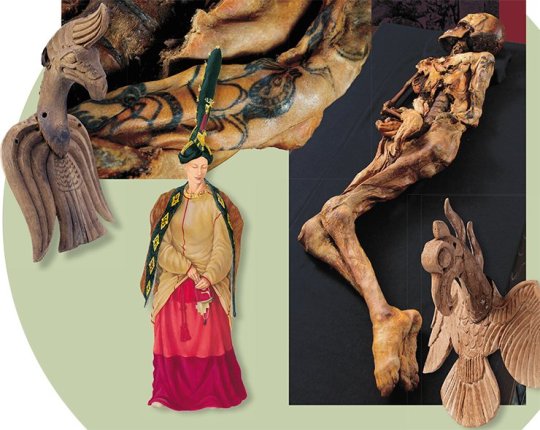
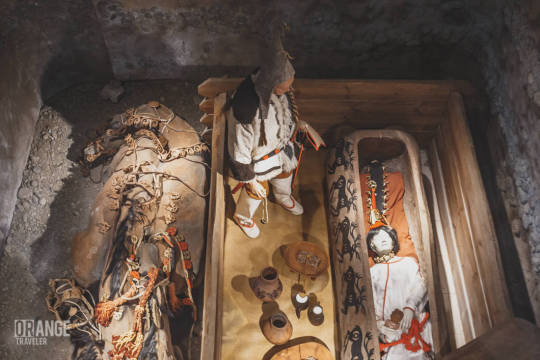
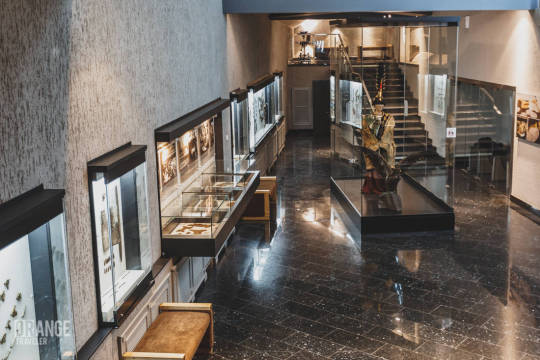








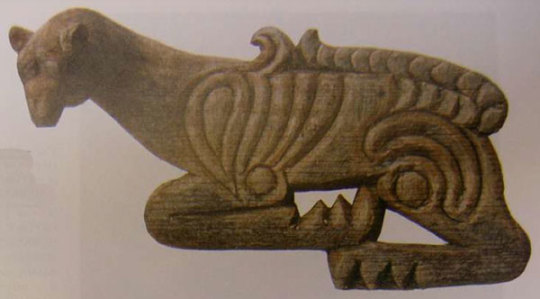




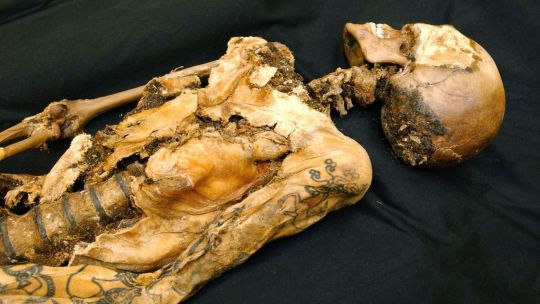
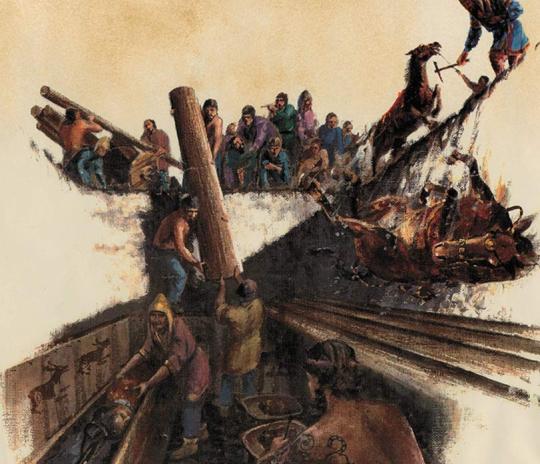
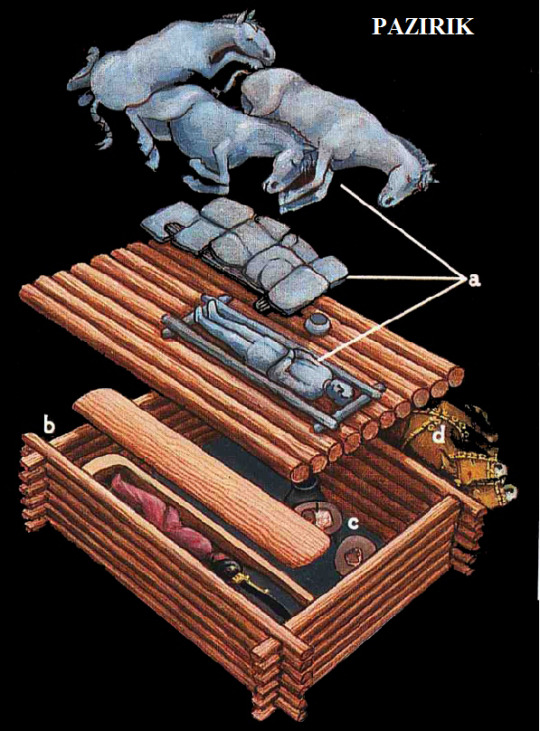
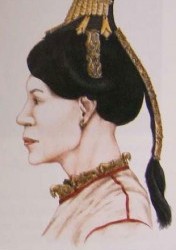




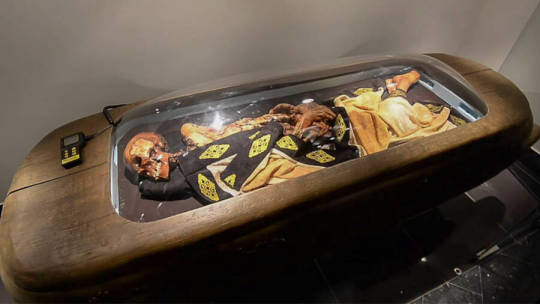

The Princess of Ukok (aka Siberian Ice Maiden & The White Lady) 500 BCE. Tumblr image limit only allows 30 photos, I will include a link to my blog, at bottom, with more photos and more organized descriptions.
"In 1993, Russian archaeologist Natalya Polosmak and her team discovered an ancient tomb at the Ukok Plateau, in the Altai Mountains region of Russia near the border with China.
The ‘Maiden’ belonged to the Pazyryk culture. The Pazyryk people, a congregation of Scythian nomadic tribes, lived in the Altai mountains in the 6th to 3rd centuries B.C.
The woman’s body, carefully embalmed using peat and bark, was laid on its side as if she were asleep. She was young and her hair was shaved, but she wore a wig and a tall hat. She was 167cm tall. Some tribal animal-style tattoos remained on her pale skin: creatures with horns that evolved into floral shapes. Her coffin was made large enough to accommodate the 90cm felt headdress she wore. She was also wearing a long wool skirt with red and white stripes and white felt stockings.
'A mop of hair on top was tightly wrapped around with a woollen cord, which helped this mop to stand upright,' she says. 'On top of this mop was worn a red 'nakosnik' (a braided decoration made from threads), and atop of this structure was a bronze pin with a deer, standing on a sphere. The deer was made from wood, and was covered in golden foil.' Yet it was more intricate, still. 'The wig had another very important detail,' she says. Its crowning glory looked like a giant feather, 68.5 cm long, made from felt and covered with black woollen fabric, with a stick inside it to help it stand straight.' she says. 'This feather had the figures of 15 birds attached to it, which like in modern Russian Matryoshkha dolls with one inside another, were each of smaller size compared to the previous one. The birds had leather wings, tails and legs, and long necks, which most likely meant they were swans. 'This feather can be interpreted as a symbol of the Tree of Life - a healing tree which existed in so many cultures all around the planet. By the roots of the tree there is a wooden figure of a deer with a Capricorn's antlers. 'There was also ... a cap for the wig.... some 84 cm tall. It was found in Princess Ukok's burial chamber.'
The Altai princess became the second mummy found with a tattoo (tattoo had not yet been found on other, earlier mummies in the Hermitage). Kurgan 1, burial ground Ak-Alakha-3 (Ukok Plateau, Altai). Tattoos were inked on both arms from shoulders to hands. The drawings were blue and stood out against the white skin. They were preserved only on the left hand, on the right they were almost completely destroyed. Drawings were also applied to some phalanges of both hands. Archaeologists saw the tattoos during the opening of the wooden sarcophagus, then the mummy's skin began to darken, and the tattoos disappeared, subsequently they were restored in the laboratory. When other Pazyryk mummies were found, the tattoos were not visually noticeable.
The tattoos on the left shoulder of the 'princess' show a fantastical mythological animal: a deer with a griffon's beak and a Capricorn's antlers. The antlers are decorated with the heads of griffons. And the same griffon's head is shown on the back of the animal. The mouth of a spotted panther with a long tail is seen at the legs of a sheep. She also has a deer's head on her wrist, with big antlers. There is a drawing on the animal's body on a thumb on her left hand.
Somehow, many Pazyryk burials in this region were flooded, possibly with underground waters, and then froze – so the organic remains were preserved almost untouched by decay.
The embalmed body was buried at least three months after death. All this time, the mysterious woman continued to play a special role in the life of her tribe — for example, she was put in some chairs, which can be seen from the traces on the body. At the same time, a complex, time-consuming ceremony of embalming is a sign of the extraordinary status of the deceased. However, the scientists deny her status as a ‘Princess.’
“It’s not accurate to call her a ‘princess’. She was not a princess, she was a representative of the middle layer of the Pazyryk society,” archaeologist Vyacheslav Molodin, academician at the Russian Academy of Sciences, and Natalya Polosmak’s husband, told “Expert-Siberia” magazine in 2012.
Studies of the mummified remains extraordinary advances in our understanding of her rich and ingenious Pazyryk culture. The tattoos on her skin are works of great skill and artistry, while her fashion and beauty secrets - from items found in her burial chamber which even included a 'cosmetics bag' - allow her impressive looks to be recreated more than two millennia after her death.
The princess' cosmetic kit included a black horsehair brush with a thin wooden shaft inside, tied with a (disappeared) leather cord, completely studded with cylindrical marble beads, and handfuls of scattered powder of bright blue-green color. There were also the remains of a broken thin rod of flat metal rings filled with the same blue-green substance (that is, in fact, it is a pencil for drawing lines or drawings like our eyeliner).
Analysis showed that it was vivianite (blue iron ore). Such a powder, closer to modern times, was used to obtain green paint. In the Altai Mountains, it is known as a satellite of gold-bearing sands. Perhaps this powder had a sacred meaning. The vivianite pencil may have been used for face painting, possibly for people with special functions or gifts. Among the Pazyryks, face and body painting has not been recorded, partly because not a single mummified face has been found. But among the peoples close to the Pazyryks, such a tradition was recorded, in particular, the painting of the face with two spiral drawings. There is a weak association with the blue-green turquoise Hathor from the Sinaiand numerous Sumerian green cosmetic "shadows" in boxes discovered during excavations in Ur and other cities of Sumer.
It is believed that she was not in fact a royal but that her use of drugs to cope with the symptoms of her illnesses may have given her 'an altered state of mind', leading her kinsmen to the belief that she could communicate with the spirits. Her lavish grave suggests she was someone of singular importance.
The MRI, conducted in Novosibirsk by eminent academics Andrey Letyagin and Andrey Savelov, showed that the 'princess' suffered from osteomyelitis, an infection of the bone or bone marrow, from childhood or adolescence. Close to the end of her life, she was afflicted, too, by injuries consistent with a fall from a horse.
The mystery was solved only in the 2010s with the help of a computed tomography scan. It showed that the maiden suffered from breast cancer that killed her in about three years. She was 25 at the time of her death.
'During the imaging of mammary glands, we paid attention to their asymmetric structure and the varying asymmetry of the MR signal,' stated Dr Letyagin in his analysis. 'We are dealing with a primary tumour in the right breast and right axial lymph nodes with metastases.'
'The three first thoracic vertebrae showed a statistically significant decrease in MR signal and distortion of the contours, which may indicate the metastatic cancer process.' He concluded: 'I am quite sure of the diagnosis - she had cancer.
'She was extremely emaciated. Given her rather high rank in society and the information scientists obtained studying mummies of elite Pazyryks, I do not have any other explanation of her state. Only cancer could have such an impact.'
'When she arrived in winter camp on Ukok in October, she had the fourth stage of breast cancer,' she wrote. 'She had severe pain and the strongest intoxication, which caused the loss of physical strength. 'In such a condition, she could fall from her horse and suffer serious injuries. She obviously fell on her right side, hit the right temple, right shoulder and right hip. Her right hand was not hurt, because it was pressed to the body, probably by this time the hand was already inactive. Though she was alive after her fall, because edemas are seen, which developed due to injuries.
The DNA research performed on the remains showed that the ‘Maiden’ is genetically closely related to contemporary Selkup and Ket peoples – indigenous Siberian tribes still living in Russia.
'There was a moment of gross misunderstanding when a legend came about this mummy being a foremother of people of Altai,' said Molodin.
'The people of Pazyryk belonged to different ethnic group, in no way related to Altaians. Genetic studies showed that the Pazyryks were a part of Samoyedic family, with elements of Iranian-Caucasian substratum.'
So perhaps more Samoyedic than Scythian.
'We tried to overcome the misunderstanding, but sadly it didn't work.'
The Altai authorities have now declared the remote mountain area from where the princess and her kinsmen were buried as a 'zone of peace' where no more excavations will take place, despite the near-certain treasures lying in the permafrost.
Such work amounts to plundering, they believe.
To Molodin, who found the male mummy several years after the princess, this deprives the world of a valuable scientific inheritance. He argues, too, that the issue is critical since global warming means the ancient bodies will decay.
Scientists reckon there are thousands of burial mounds here, hundreds of which date to the Pazyryk period, many of which may contain answers to questions about where we come from.
The ancient mummy of a mysterious young woman, known as the Ukok Princess, is finally returning home to the Altai Republic this month (The Siberian Times, August 2012).
On 19 May 2014, during a speech at the museum, (Alexander) Berdnikov reminded the crowd and media that the renovation and repatriation of the Altai Princess was one of his most important accomplishments, of course aided by Gazprom:
We should be proud that we have such a museum. A great accomplishment; we thank the management of Gazprom. When I was appointed as the Head [of the Altai Republic] one of my main goals and dreams was to have a bright opening of a renovated museum and that we could welcome the “Siberian Ice Maiden” home again. Today our museum is the best one east of the Urals and is the only one that has been restored in Russia in the past twenty years. (Government of the Altai Republic 2014)
The museum, the repatriated Altai Princess, and a vibrant cultural life, all indirectly bankrolled by Gazprom."
-taken from The Siberian Times, Russia Beyond, Taylor & Francis Online, world-jewellery livejournal, and peaceandjustice
#pazyryk#samoyeds#uralic#scythian#saka#archaeology#anthropology#history#ancient history#pagan#tattoos#breast cancer#antiquities#artifacts#antiquity#mummies#6th century bce
316 notes
·
View notes
Photo

Anaximenes of Miletus – Scientist of the Day
Anaximenes was the third of the three Ionian pre-Socratic philosophers from Miletus, on the west coast of Asia Minor.
read more...
#Anaximenes of Miletus#Ionian#pre-Socratic#natural philosophy#histsci#histSTM#6th century BCE#history of science#Ashworth#Scientist of the Day
27 notes
·
View notes